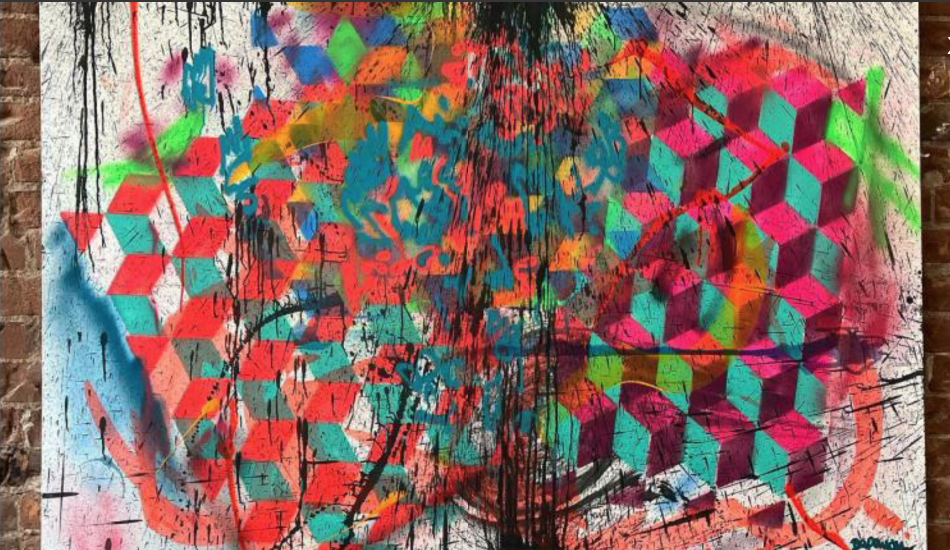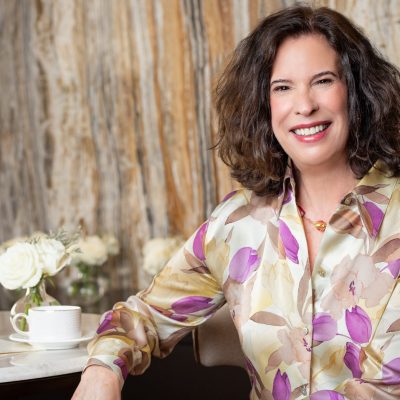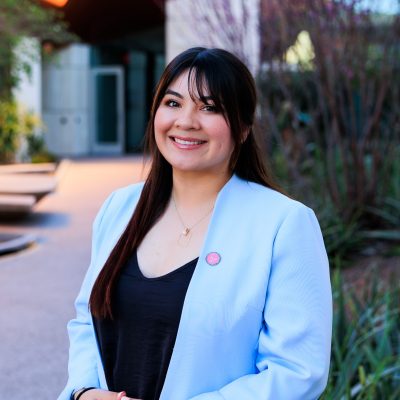Frontdoors Magazine August/September 2021 Cover Story: The Big Return


The path back for arts and culture in the Valley winds through a 140-acre garden in Papago Park, down Phoenix’s Roosevelt Row, through venues downtown, through the Civic Center in Scottsdale, and on around the entire metro area.
As the pandemic loosens its grip, theaters, orchestras, opera companies and art galleries are rehearsing, hoping and optimistically holding their breath. For cultural and financial reasons, the arts and culture sector is banking on a robust return of in-person events. Here, leaders from local arts and culture organizations explain what they learned during the closure, how it changed their organizations, and the big things they’re betting will bring audiences back.
BALLET ARIZONA
“I could never have imagined a year ago that today we would feel as positive about our future as we do,” said Samantha Turner, executive director of Ballet Arizona. This time last year, the organization was operating from what Turner calls “the COVID pit of despair,” creating dire budgets and staring at worst-case scenarios. Not anymore.
After a deft transition to digital offerings early in the pandemic — Ballet Arizona presented archival performances online, jumped into video conferencing for students to continue their training and connected patrons with dancers via book clubs and live conversations — the company was thrilled that support from community members like Jacquie and Bennett Dorrance as well as the Flinn Foundation and Virginia G. Piper Charitable Trust, along with federal, state and city recovery funds, helped replace the more than $3.5 million in ticket revenue that vanished with the pandemic.
“We made it through, kept the dancers and staff together, and the community not only told us how much we mattered to them, but they showed us with their stalwart support,” Turner said.
This season, the company is excited to present “Juan Gabriel,” a world-premiere work from Ballet Arizona artistic director Ib Andersen. Inspired by a concert performance by the legendary Mexican singer, composer and musician, the work will feature costumes by renowned Mexico City designer Carla Fernández.
Juan Gabriel, who died in 2016, was a veritable superstar, known for glittery outfits and passionate performances. “Ib is eager to capture that energy in this new ballet, which will feature parts of Juan Gabriel’s groundbreaking concert at the Palacio de Bellas Artes,” Turner said.
Looking ahead feels like a luxury after so much looking around. “It was without a doubt my most challenging year as executive director for the ballet,” Turner said, noting with pride that they never stopped delivering classical ballet experiences when the uplifting power of art was most needed.
“I learned that we are all stronger together and that when we come together, we can get through anything,” Turner said.
DESERT BOTANICAL GARDEN
Like most public gardens in the U.S., Desert Botanical Garden remained open throughout most of the pandemic, offering the community a safe place to visit, exercise and connect with nature. “The healing nature of the Garden became foremost in people’s minds,” said Ken Schutz, Desert Botanical Garden’s executive director.
The leadership team used these skyrocketing community needs and the belief that they could serve as a rallying cry to keep the Garden open while maintaining health and safety for everyone. “Our mantra was, ‘Safety first, bottom line second,’ and that strategy paid off,” Schutz said. “We welcomed more than 200,000 guests and not one Garden staff member became seriously ill, nor was any staff member hospitalized due to COVID.”
For Schutz, the last year underscored the vital connection between nature and people’s well-being. That’s why he is delighted to share news of a blockbuster event guaranteed to get people outside. “Dale Chihuly will bring his art to the Valley for a third time this year, with an opening date in early December,” Schutz said. “We are cosponsoring the Chihuly exhibit with Taliesin West, and both venues will be chock-full of amazing glass installations.”
Schutz hopes the collaboration might serve as a model for other arts and culture organizations in the Valley as they bring their programs back. “The pandemic taught me patience, and how to live with uncertainty,” he said, noting that although the Garden remained open, the situation required unceasing (and exhausting) adaptation. So it’s not surprising that Schutz is eager to put a tough year in the rearview mirror. “This fall is everyone’s chance to reconnect with their favorite arts and culture organizations and shake off that bad memory,” he said.
ARIZONA OPERA
During the pandemic, Arizona Opera focused on digital technology to serve opera fans and reach new audiences. “I love how our team rallied to find these new expressions of how opera could connect with people when our traditional approach to performances wasn’t possible,” said Joseph Specter, Arizona Opera’s president and general director.
With the 2021/2022 season marking Arizona Opera’s 50th anniversary, each of its programs has been carefully curated. But the release of “The Copper Queen” signals how deeply the organization embraced a digital transformation. The opera, which is Arizona Opera’s second world-premiere commission, was initially slated to open the 2020/21 season but was adapted to film in response to the pandemic.
Named for the hotel of the same name in Bisbee, the film — which was led by Arizona Opera’s first all-female director/conductor/designer creative team — will be released on Arizona Opera’s Vimeo channel (ondemand.azopera.org) this October.
The opera tells the story of Julia Lowell, once an imprisoned sex worker whose ghost now reportedly haunts the hotel’s Room 315. “In addition to being a remarkable expression of Arizona-based storytelling through opera, the project also represents Arizona Opera’s resilience in adapting through the pandemic to not only make the project happen in spite of the hurdles, but to find a way to use the crisis to bring ‘The Copper Queen’ to potentially even greater numbers of viewers than possible in a conventional on-stage production,” Specter said.
Reaching new audiences is key to Arizona Opera’s mission, whether through its K-12 education, community engagement programs or training opportunities for singers, pianists, directors and production personnel. “In every way that an opera company can invest its resources in contributing to the value of its community, Arizona Opera strives to do that,” Specter said.
But the pandemic taught the company that its contributions to addressing community needs can come a bit quicker than they may have traditionally. “We have learned that we can indeed react quickly when needed, build programs more quickly than we have in the past, and still deliver significant civic value in the process,” Specter said.
XICO ARTE Y CULTURA
Xico has had a presence in the Valley for more than 45 years, since its founding in the 70s as a platform for Chicano and Indigenous artists during the Chicano art movement. “Our activities encourage LatinX and Indigenous artists to share their inspiration, stories and heritage, which facilitates a greater understanding of cultural value, identity and significance within the community,” said Donna Valdes, Xico’s executive director.
The pandemic was hard on the organization, especially when coupled with the racial and cultural tensions the country experienced over the past year.
“It pushed Xico to adopt new strategies to provide opportunities to showcase the arts and their importance and value in our community,” Valdes said.
Xico increased its social media presence and adapted workshops for a stuck-at-home crowd by releasing DIY activities on YouTube. It also created a virtual exhibition space that showcases new exhibitions monthly and highlights artists’ studios with virtual tours.
In a time of social distance, Xico created safe ways to interact with art, such as walk-by exhibitions that could be viewed safely through their window. Xico also worked with Indige Design Collab and Roosevelt Row Community Development Corporation to launch the Uncontained Mural Project, which garnered national attention.
This walk-by/drive-by rotating mural project elevates emerging LatinX and Indigenous artists by showcasing their stories on a shipping container in the Roosevelt Row Arts District, not far from Xico’s new home on First Avenue.
Xico moved in last December, and by May was able to open its doors for a three-day grand-opening celebration to accompany its annual art auction. “We exhibited artwork produced by 25 local artists, held printmaking demonstrations and interactive activities to showcase our programs and new space,” Valdes said.
Opening soon is Xico’s expanded printmaking studio, which will let artists incorporate modern practices with traditional techniques. “Xico will be the first ‘public’ lithography studio in Phoenix, creating access for artists to practice this significant art form,” Valdes said. This fall, Xico will also open the Artisan Mercado, a pop-up market that will showcase rotating artisans.
“As a community, we need to support our local artists. By doing so, we are strengthening our local economy, improving our community and creating an environment for creatives to flourish,” Valdes said.
SCOTTSDALE ARTS
With new exhibits, timed entries and reimagined, distanced events, Scottsdale Arts racked up a string of successes during the past year. But it’s the future that the arts umbrella organization — made up of Center for the Performing Arts, Museum of Contemporary Art, Public Art, Learning & Innovation, Canal Convergence, and Arts Festival/ Events @ Civic Center — has its eyes squarely on.
“Scottsdale Arts exits the pandemic in exceptional financial shape and without ever laying off a single staff member,” said Gerd Wuestemann, Scottsdale Arts president and CEO. “We have been able to work hard and prepare our most star-studded, most diverse and most extensive season ever.”
In addition, Scottsdale Arts has taken on a visionary construction project. The concept creates a walkable corridor of galleries, art facilities, public art, museums and concern venues, studded with hotels, restaurants and bars, all in an easily walkable span. “We are very excited about this design. It will transform our campus,” Wuestemann said.
You can hear the excitement when he talks. “There’s a new outdoor stage on 75th Street, which will play up to 2,200 in lawn seating. Right in front of Center for the Performing Arts, there will be an ingenious 360-degree stage which allows us to play in four directions and to 50 to 1,500 people,” he said.
Construction starts this September and is set to wrap in December 2022, in time for Super Bowl 2023 Fan Zone events.
“We are planning to ramp up to 80 annual outdoor events over the first three years — from large and small festivals to community engagement, concerts, free family shows, theater, dance — all under starry skies,” Wuestemann said.
THE PHOENIX SYMPHONY
When Suzanne Wilson became president and CEO of The Phoenix Symphony in late January 2020, she could never have imagined what was about to unfold seven weeks later. With 140 performance cancellations, Wilson and her team were forced to make heartbreaking decisions to ensure the survival of the historic institution.
“Looking back, I am struck by the warm and remarkable community who welcomed and supported me and helped steward this orchestra through a tumultuous time,” Wilson said.
During those difficult months, The Symphony’s commitment to being a catalyst for connection, wellness and hope was stronger than ever. It produced digital content to enrich students’ remote learning and entertain vulnerable communities. Musicians even organized impromptu performances outside of hospitals and vaccination sites to show their gratitude for frontline workers.
At the same time, the state’s largest performing arts organization discovered just how much gratitude the community has for it. “Thanks to our extraordinary friends, board of directors and all who stood by our side, as well as our highly anticipated award from the Shuttered Venue Operators Grant, we now see the light at the end of the tunnel,” Wilson said.
The upcoming season marks The Symphony’s 75th anniversary and Wilson looks forward to a spectacular celebration. “This season feels like a homecoming and will be less about what we are playing and more about the fact that we are performing and returning to live concerts surrounded by our community,” she said.
With its official season announcement coming soon — “It’s worth the wait,” Wilson said — The Phoenix Symphony is looking forward to its orchestra performing as a whole once again. Excitement is in the air, not just for the orchestra, but for all of the collaboration, compassion and creativity that the challenges of the pandemic have brought about.
“Stay tuned — there’s so much more to come, not just from The Phoenix Symphony, but from all of the cultural organizations,” Wilson said. “I believe that as we continue to emerge from the pandemic, you’ll see an explosion in the arts and a celebration of what it truly means to be a community.”






